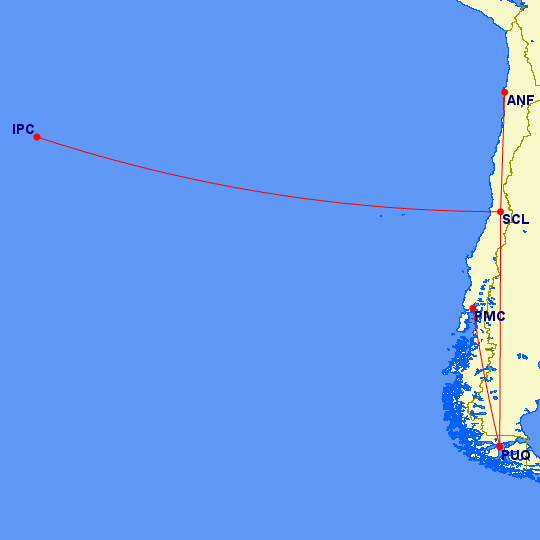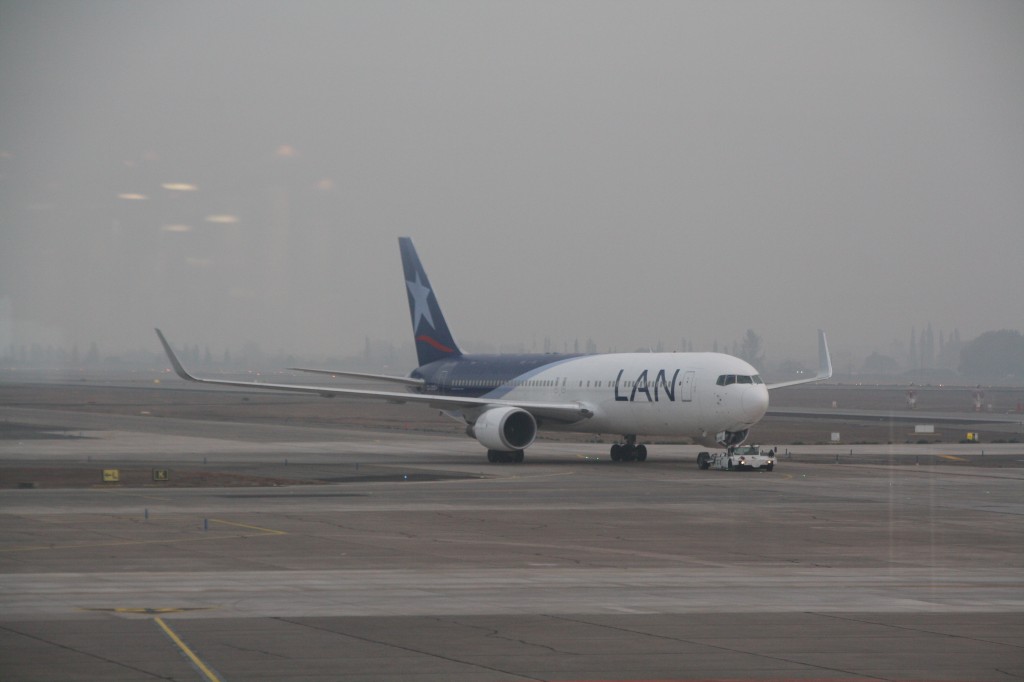On our second day on Chiloé we woke up to a thick fog and piled on a heavy breakfast at the hostel. The rain had stopped and it looked like the sun was trying burn through the fog. We jumped in our trusty Chevy and headed east to find the coastal road that stretches from the port of Chacao (where our ferry from Puerto Montt landed) to Castro which is about half way down the island.
The dirt road took us through a hilly green countryside that was covered in small farms. We passed through numerous seaside villages and stopped to see some of the wooden churches and seaweed-covered beaches. It appeared that many of the homes were involved in the seaweed industry as they had piles of the stuff drying nearby.

Quemchi, Chile
We made it to Quemchi, about halfway to Castro, by the early afternoon and realized that our progress down the coast was much slower than expected. We made a quick visit to the mirador in Quemchi to get a bird’s eye view of the village and the fish (shellfish?) farming rigs out in the bay and then hopped on Ruta 5 for Castro.
Castro, the pricipal city on Chiloé (population 40,000), was quite lively when we arrived. We pulled into a parking spot right along the main square and only had to walk a few steps to the tourist office. We have been very impressed with the tourist offices both here in Chiloé and in the Lakes District of Argentina; they know how important tourism is and the materials they provide are very good.
The first item on the to-do list in Castro was lunch. We had heard that there were some nice waterfront restaurants down by the market so we headed in that direction. Within minutes we were sitting at a nice table right by the water-facing window of a stilthouse. After spying on the food on the surrounding tables I decided to give curanto a go.
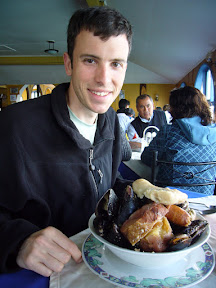
Curanto: a big bowl of mussels, clams, chorizo, chicken, pork and some sort of bread patty. Served with broth.
Curanto is a hodgepodge of shellfish, meat and potatoes. Traditionally, it is cooked in a hole in the ground but I suspect that what I had for lunch was prepared in a stew pot. The enormous bowl included a very generous serving of mussels, clams, chorizo, pork, chicken and milcaos. The mussels were absolutely massive, definitely the biggest I’ve seen and were exceptionally tender. Certainly not the chewy sand-filled things I often get around Boston. In the end, I wasn’t able to finish the entire bowl but I guess that isn’t too surprising seeing that the three ladies sitting next to us split one bowl between the three of them. The meal was an exceptional value at 8 USD.
After lunch we visited the massive chuch of San Francisco which is the largest of the wooden churches on Chiloé. Next, we headed to another section of waterfront to check out the colorful palofitos which are traditional stilt-house.
Before we knew it our time with our rental car was up and we had to return it to Ancud. I was happy that I didn’t have to wash it!
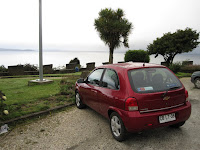
Before…
|
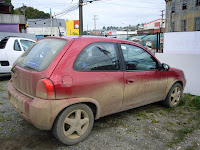
…and after!
|
Castro, Chiloé Island, Chile
|
|
|
|
|
|
|
|
|
|

The Andes as seen from Chiloé
|

Boat in the mist
|
|
|

The church in the village of Lliuco
|
|

Seaweed drying in the sun
|
|
|

Drying seaweed
|

Quemchi, Chile
|
|
|
|
|
|
|
|
|
|

Curanto: a big bowl of mussels, clams, chorizo, chicken, pork and some sort of bread patty. Served with broth.
|
|
|

The palafitos (“stilt houses”) in Castro
|
|
|
|
|

Before…
|

…and after!
|
|
|
|
|
